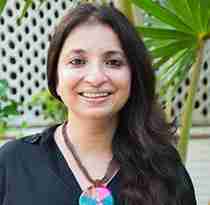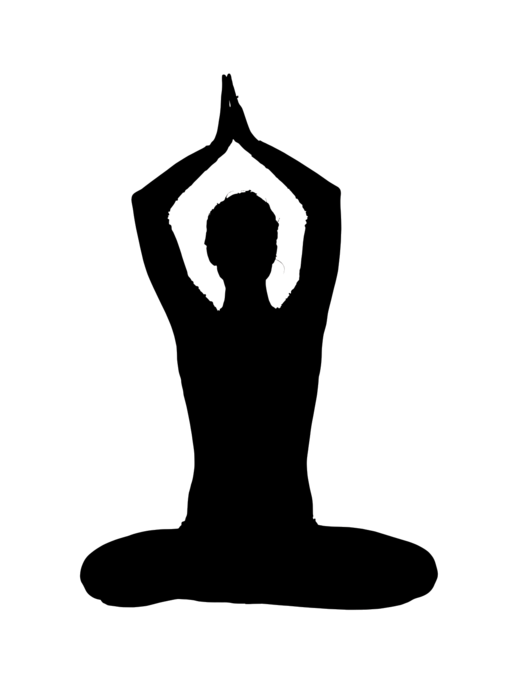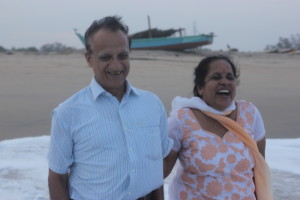Yoga for the Silver Years
Yoga at 60 plus can be a welcome addition to your health routine as it helps to achieve not just balance, mobility and a peaceful mind but can also help in controlling certain ailments. By Reshmi Chakraborty.
Stay healthy and active with Yoga
Pic: Wikimedia Commons
For 30 years, Mumbaikar Ramesh Joshi was the busy marketing head of a pharmaceutical firm travelling around the country. He had several ailments and a lifestyle that wasn’t the most disciplined. Ten years ago, an introduction to yoga during a visit to North India became a life changing experience for him. Today, at 69, Mr Joshi is an advocate of yoga for everyone, including people over the age of 60. He is also the proprietor of a fitness firm ‘Healththruyoga’ and a practitioner who teaches all over Mumbai.
“Yoga is great for mobility when it comes to seniors,” he says, adding that yoga has helped him overcome various ailments like blood pressure and hypertension. “When I started the first time at an ashram near Haridwar, I did four hours of yoga and gradually found all my ailments disappearing, including kidney problems,” says Mr Joshi. He also remembers losing weight by 18 kgs though he cautions that post 55-60 years, one should not take up Yoga without consulting their doctor and doing a thorough check up. One also needs a Yoga teacher who understands the different requirements that come with advanced age. “For example, for those with backache, we would recommend back relaxing and not back strengthening exercises,” he notes.
Active Body, Active Mind
Yoga has been long known for enabling a healthy body and calm mind. Studies also suggest that Yoga can be beneficial for seniors too. Yoga asanas can tone up the body, keep our internal system in balance and refresh the mind and body.
“Research shows that Yoga offers significant benefits to the elderly. This is true for both physical aspects like flexibility and stamina, as well as mental aspects like alertness, memory, and mood. Specific studies have also shown that yoga can reduce pain in chronic diseases like arthritis and reduce stress and anxiety in patients with cancer,” says S Varambally, Department of Psychiatry, Advanced Centre for Yoga, National Institute of Mental Health and Neurosciences (NIMHANS), Bangalore. In fact, to test this theory, a specific yoga module for improving cognitive function in the elderly was developed by NIMHANS.
According to a study published in Indian Journal of Psychiatry, NIMHANS doctors tested a yoga module on 120 elderly living in residential care homes in and around Bangalore. “We found that Yoga based-intervention appears beneficial to improve several domains of cognitive function in this population. This yoga module also leads to improvement in sleep and Quality of Life among the elderly. A separate small study, also found that elderly who practiced yoga for six months had increases in the volume of a brain area (hippocampus), which is important for memory,” the study mentions.
“More than 50 percent elderly in India have problems in life, stress and anxiety,” says Mr. Joshi, adding that their ailments are often psychosomatic. He mentions that yoga helps in restoring their mental peace and calm the mind, often the reason for various ailments. According to Mr Varambally, There is good evidence of different yoga modules helping to control diabetes, hypertension, arthritis, cardiac problems, anxiety and depression, sleep problems, and improving cognitive function. “At NIMHANS, we have done specific research in elderly with Mild Cognitive Impairment (a precursor of dementia), and we have found that yoga helps improve memory and other cognitive functions in these elderly,” he adds.
Stay healthy and happy with yoga
Pic: Silver Talkies
Asanas That Suit Elders
Stretching, bending or even sitting on the floor becomes a difficult physical activity for many elders, while most asanas in Yoga practice tend to involve these postures. Does that prove a hindrance to practising yoga for those with physical ailments like back or knee problems? “There are specific modules (developed at NIMHANS for patients and caregivers), available which combine different asanas, pranayama, and chanting, which are designed for ease of performance and improving specific abilities,” says Mr Varambally.
Singapore based senior yoga teacher Sujata Cowlagi suggests that before teaching, instructors “check the physical and medical conditions” of the seniors. She also points out that instructors can offer a chair for difficult poses like tree balance pose and be close in case they fall or get dizzy. “Depending on conditions such as weak knees , the instructor may need to change the asana sequence to be more therapeutic,” says Ms Cowlagi and cautions that it’s important not to overdo anything and steadily increase the pace and repetitions.”
Mayuri who runs the Yogatree Studio in Bangalore, says that basic asanas like Tarasana and Vrikshasana can be done by taking the support of a wall. “Asanas like Bhujangasana and Suryanamashkara can be modified for the elderly, while Pranayam can be done by sitting on a chair with a straight back and practising breathing. Elderly can also practice alternate nostril breathing.” says Mayuri, mentioning that there is no need for the elderly to sit on the floor. “If the instructor knows how to guide them, they can easily do several asanas,” she says, citing the example of Yoga Guru BKS Iyengar, who is now 94 and is a living legend when it comes to Yoga. Mayuri adds that standing and sitting poses are ideal for the elderly, who can also take the help of props.
Ramesh Joshi is a supporter of Pranayama for the elderly. “It helps to regulate the internal organs if various pranayams are done in the right order.” Once again, health requirements need to be kept in mind. “Many seniors do Kapal Bhati Pranayam (breathing exercises) but it has to be done properly with care as can otherwise have side effects. Ideally, people with respiratory disorders should not do Pranayams where they have to hold their breath.”
Doing it Right
One of the first rules of yoga, or for that matter any exercise is to find a certified instructor. There are several yoga schools mushrooming all over the country and before seniors enrol, they must check the background of the instructor and certifications.
Mr Varambally says that, “As a general rule, we would emphasize that yoga should be taught by a trained teacher only. This is especially important in the elderly, keeping in mind that the elderly may have several medical ailments and limitation in movement. The yoga teacher should be informed of these issues beforehand, so that they may take them into account and suitably modify the module.” Nirmala Machado, a Mumbai senior who practises yoga at her doctor’s advise since the last three years suggests going very slow, stopping to rest and doing what you can do the best of your ability. “If you experience any unusual aches and pains, please ask your instructor and doctor immediately,” she cautions.
Has Yoga helped her achieve a better level of fitness? Mrs Machado isn’t sure if her Blood Pressure has been controlled by Yoga or medications but says that regular practice has certainly helped her to achieve a calmer state of mind than earlier. “It makes me feel relaxed,” she says.
Yoga is an exercise of the state of mind, Mr Joshi says, adding that anxiety, tension , depression, all need to be exercised. Mayuri cautions that if the elderly are starting Yoga for the first time in life, how they take to it it depends on their mental and emotional health. “In the beginning there may be some physical resistance and mental as well,” she says, adding that the need to find a suitable instructor who can understand a senior’s medical condition and modify the asanas is a must. She suggests that in certain cases people need to exercise caution. “E.g., people with BP should not bend forward.” Talking about the workability of Yoga, Mayuri mentions working with an elderly person who was paralysed on one side. Yoga therapy was able to bring back movement to his hand, shoulder and leg and for the first time after his partial paralysis and stroke and according to her, he felt confident and happy. Her last word: Find a good instructor who knows that most asanas can be modified like back bends, forward stretches and supine asanas.
It’s something Mr Joshi agrees with. “I would advocate Yoga but only with proper guidance. There’s no benefit if it is not done right. But once it is done properly, the benefits are immense.”
So check with your doctor and try out Yoga to see if it works its magic on you.
If you wish to find a Yoga class or teacher in your area, please write to us at silvertalkies@gmail.com
Comments

Anonoymous
19 Aug, 2019
[…] exercise and physical activity to the daily routine can help older adults enjoy a healthy life. According to doctors, having a physically active and engaged life enables older adults to prevent th… Not just that, it keeps the brain health strong and prevents any form of stress and anxiety among […]
You may like to read:

Health and wellness
Five Lifestyle Changes To Ease Bladder Control

jessica smith
5 mins read

Health and wellness
Five things to keep in mind when considering organ donation

sunayana singh, ceo of organ india, an initiative of the parashar foundation
3 mins read

Health and wellness
How NURA Uses AI-Enabled Screening to make a difference in Preventive Healthcare

Silver Talkies
4 mins read


Post a comment